
Miami, spring of 1967.
Celio Diaz, a married man and father of two, wanted to change careers. While some men wished to wear moon boots or patriotically fight in Vietnam, others preferred to serve glitzy cocktails at 30,000 feet.
He applied to work as a flight attendant for Pan Am and got rejected. Why? He had a bulge, and for the airline– the pioneer of the jet age – that was an obvious hindrance to the sexually implying overture, “Tea, coffee or me?”
Undeterred, he sued Pan Am for violating Title VII of the 1964 Civil Rights Act. Basis of sex. He won. But by 1971 he was too old to apply.
Despite the unfortunate ending, if not for Celilo’s determination, men may have never flown or toured the best of La Guardia’s cruising hot spots between flights. Let alone play a fundamental role in the post-stonewall LGBTQ+ liberation movement.
Sassy, camp and well-groomed are some of the stereotypes popularly associated with gay flight attendants. Sure, being paid to fly from Paris to Hanoi (and occasionally Delaware) was exciting. However, a job is a job, and we must refute the simplistic argument that travel and white glove silver service were the only attracting factors. Many people wished to travel. And many more worked in the service industry. So, who wouldn’t want to combine the two?
It’s estimated that more than 50% of male flight attendants are gay. Other industries count between 15-20%. So, what was it then? Gay-friendlier working spaces? Or perhaps, healthier environments outside the obscure bars of the West Village and Castro District?
How did the sky become such a hodgepodge of Dorothy’s friends?
Before 1964, employers were allowed to create and openly publicize their discriminatory employment policies. In Pan Am’s case, the ideal female candidate had to be unmarried, childless and willing to retire by 32 – because everyone knows that women, at 33, become incapable of performing any task other than motherhood.
Criteria like weight, height and physical appearance were also deciding factors. No wonder airlines had little interest in hiring Adam, 29 and male. But this all changed in 1964 with title VII of the Civil Rights Act, which prohibited discrimination based on race, color, religion, sex, and national origin.
Still, men remained persona non grata in the skies.
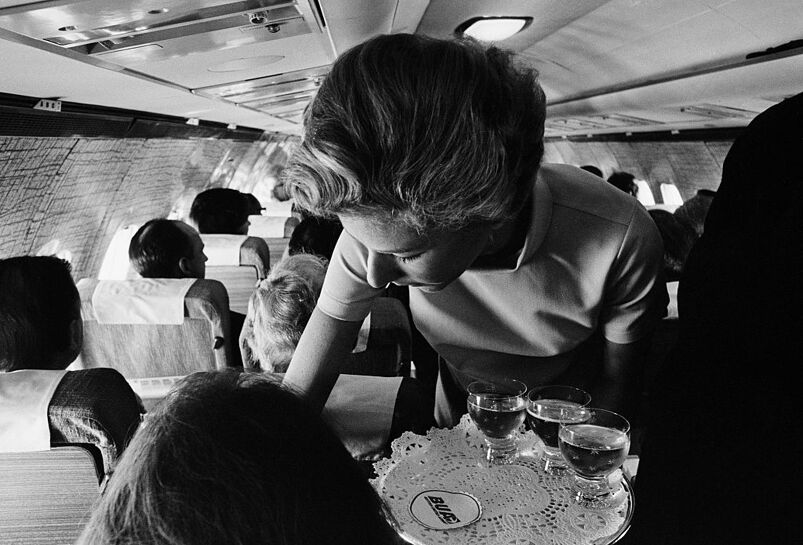
Airlines paraded their well-travelled and elegantly groomed flight attendants as objects of desire. Essentially, an add-on entertainment to pricy tickets. But Cruz v Pan Am sent the gender-conservative industry into turmoil.
After 1971, the prominent cleavages of Southwest Airlines started to hide behind buttoned-up collared shirts. Floaty cravats sided pinned down ties. And finally, Adam joined Shirley in offering you tea, coffee and the morning newspaper.
For the travelling public – especially men – this had the potential of being erotically unsettling. Because nothing shouted sex like filtered coffee gushing into a cup brimming with sweetened cream while standing hip forwards in a polyester uniform.
The introduction of men in the cabin created dissonance by butting in (pun certainly intended!) the otherwise clean gender division.
Pilots embodied a proud hegemonic machismo in the cockpit, while the stewardesses symbolized mother-like care, femininity, and a fleeting sexual allure. Although “mother” and “sexual allure” should never be in the same sentence, airlines thrived by promoting these qualities on billboards nationwide.
“In the late eighties, we travelled for twenty-eight-day trips worldwide. The wedding bands were tucked away by the first hour of the flight. Late-night conversations often revealed a duality between their work and personal lives. First, proud gay men in the skies and then a return to traditional manhood when we touched down in Heathrow,” Sally, a long-serving flight attendant for a famous British airline, tells Queerty.
Tom, now 78, was part of one the first mixed batches to train with American Airlines in 1973. In a class of 52 stewards, 12 were male, of which 9 were gay. Interviewing Tom today, some of the assumptions I had turned true. Firstly, in a prevalently female community, gay men strived in an almost accepting environment.
It’s no secret that women were – and often still are – a gay man’s best friends, thus bestowing the validation gay men struggled to find elsewhere (read: dad, are you proud of me?)– particularly in professional environments.

Tom describes the aeroplane as a stage six miles high “we catered to wants and needs in a way that current passengers have never experienced,” adding, “The flight attendants were the cast that performed the service show to the seated audience.”
In an era before smartphones, Wi-Fi, and inflight entertainment, the service was the entertainment. Arguably, so was the post-flight debrief in the hotel in Rome.
In the public consciousness, male flight attendants – historically associated with women and femininity – became synonyms for homosexuality. Gay men were accused of quasi-double-edged queerness. First sissified for playing a “woman’s role” in society and then for their sexual interest. Galleys and aeroplane cabins became places of “genesis” where the gay community was made visible.
As academic Phil Tiemeyer points out in his dissertation Manhood Up In The Air, “This sort of gay community-building was particularly crucial in the immediate post-Stonewall era of the early 1970s.”
Acceptance of men in the profession and the associated queerness had a short run. In the early 80s, HIV spread like wildfire in the gay community. People panicked, fearing that the “lifestyle” led to more significant risks than destroying society’s moral fabric.
In fact, a gay Canadian flight attendant, Gaëtan Dugas, was wrongly labelled as patient Zero by a 1987 non-fiction book that scapegoated him as the leading cause. But nothing new here. LGBTQ+ folks have constantly been demonized – and continue being so – for uncontrollable circumstances.
Sadly, it won’t be long before a B.S. study commissioned by Governor Bill Lee of Tennessee might reveal that COVID-19 originated in a drag bar.
However, it wasn’t until scientists, through genetic analysis of samples, confirmed that Dugas was not the cause nor the so-called Patient Zero. At the end of the interview, Tom regrettably mentioned how four–including two roommates–died of AIDS-related infections.
Interviews and research led me to believe that, beyond the travel and desire to deliver outstanding customer service, a clear element of escapism brought the gays flying. Men were recruited in the prime of the LGBTQ+ liberation movement.
Yet, despite the brisk air of change in the gay front, queer men and women alike were still squashed in acting out a straight façade in professional environments and beyond. The job and its endless travelling endeavours allowed gay men a glimpse of freedom, to be themselves while working the queer friendlier skies. This gave some the courage to live fearlessly even when not at 30,000 feet. But most were obliged to retrieve their wedding rings as the plane descended to base. The expectancy to conform waited for them in arrivals.

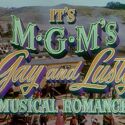
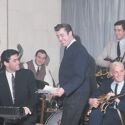
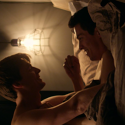


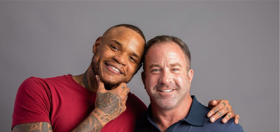

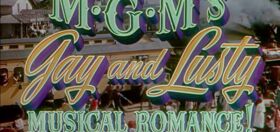
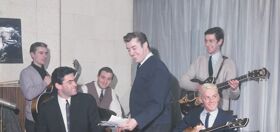

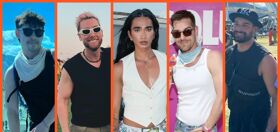




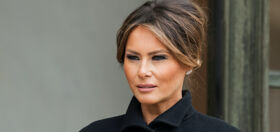
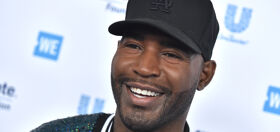
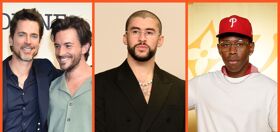
abfab
I love all things aviation and I still enjoy flying. I truely miss the 747. The Queen Of The Skies. However!
I’m curious to know when US air carriers began hiring Black People. Gay or Hetero. I suppose it’s an easy search. Perhaps Q can do it for me/us. Just sayin.
Kangol2
1960 is the year US airlines began hiring African American flight attendants.
And only because brave pioneer, Carol Edmiston, who’d interviewed with numerous airlines and been summarily turned down (after being told by a colleague that US airlines “don’t hire Negroes,” filed a complaint in 1956 with the New York State Commission Against Discrimination, and the court ruled four years laterin her favor, forcing Capitol Airlines to hire her.
Just before this but as a result of Edmiston’s complaint, Carol Ruth Taylor was hired by Mohawk Airlines. So 1960, or but 63 years ago, is when this momentous changed happened in the US, and not without struggle against racism.
abfab
Thanks Kangol.
Invader7
The 747 was a great plane. I liked the Sky Lounge ( the hump ) above the 1st class cabin .
Openminded
I only fly 3-4 round trips annually, but I can’t recall ever having anything but an all white flight crew. Makes me wonder if home airport of BNA (Nashville) has anything to do with the skew.
gjg64
The 747 really was a wonderful plane…..I miss it, and especially the hump. Quietest flights I’ve ever had were up there.
GlobeTrotter
“How gay male flight attendants came to outnumber their straight counterparts”
It’s very simple actually, and I’m surprised this was never mentioned in the article. Gay men are a perfect fit as flight attendants because they’re often childless, which gives them a measure of high availability that their straight counterparts often cannot match.
One of my best gay friends just got promoted to purser on international flights, and he’s living up the life traveling all over the world. His Instagram reads like a travel agency brochure, but he’s only able to do this because he’s single and childless – basically THE PERFECT flight attendant as far as his employer’s concerned. Don’t forget, for your first few years as a flight attendant you HAVE TO work on a standby basis, meaning you must be dressed and prepped and present at the airport within an hour or two of being called…at ANY TIME whatsoever, which basically rules out raising a family, which is why this job is so much more appealing to gay men.
FreddieW
I thought that was a stereotype. But it’s true?
Next question to be answered: Why do so many gay men work at Hobby Lobby? I avoid it like I avoid Chick-fil-A, but I went there with my cousin a while back, and I swear my gaydar was screaming like a tornado siren.
abfab
You avoid it but you went there.
FreddieW
I didn’t buy anything. As I said, I went there with my cousin. She has no reason to avoid it.
mz.sam
I’m an artsy-crafty person who loves fast-food…but totally avoid these two venues like Covid-19!
andrewl
Another reason for male flight attendants at least here in Australia, Qantas as our international carrier always had male stewards even back in the 1920’s for the long haul kangaroo hop from Australia to England that took approx 10 days back then. I think they were from the shipping lines.
abfab
Nice.
cuteguy
I currently work as a flight attendant for a major US airline and even though I’ve been doing it for a little over a decade, I am getting tired of the “living out of the suitcase” aspect of the job. It’s true, when you begin you are what they call a reserve flight attendant. Meaning you are on call for certain periods of time, which is not conducive to a stable life. I will continue to work this job only part time bc I wish to retain my flight benefits, being crew I’m able to fly for free on all airlines (most of them anyways, it’s called an inter line agreement which most carriers have). Yes it is standby by there’s an app for flight crews where we can request flight loads on flights that are not in your airline. Ironically (at least pertaining to this article) when I joined I was surprised at how many straight male flight attendants there were. Especially now, the younger ones 20,21,22 yr olds are mostly straight males, some with girlfriends, and they don’t either don’t know or don’t care about the stereotype. I entered this field bc I got tired of the homophobia I experienced working in banking during my college years and felt this career choice was lgbtq friendly. As much as I enjoy the flight benefits, I’m mostly done with the hotel stays and layovers. The grass is not always greener. But it’s time I go back to a 9-5.
bachy
Interesting look at your profession, thank you for sharing!
JRamonMc
I feel that pain. I had a partner of 20 years that worked for the airlines and the distance finally tore us apart. Love him though to this day and have a lot of respect for people in that industry. Tough line of work.
Fahd
With the mass tourism that’s reviving after the pandemic, air travel just isn’t glamorous (anymore). So many of the airport close hotels that flight attendants use are just dumps too. (yes, a generalization.)
I admire the attendants who stay friendly and positive when faced with a difficult job – for example, imagine getting all those people seated with their roll-aboards stowed properly and the flight ready to leave on time – requires the patience of a saint. I’ve also noticed that many of the younger (early 20s) male flight attendants do not set off my gaydar, even though they are often quite handsome. It seems to me that more straight men are going for the job.
P.S. @ M. Serratt, nice essay, I just noticed that you wrote “gay men strived….” when I think “…gay men thrived…” would have been a better fit.
storm45701
I don’t think younger men (the majority anyway) have hang-ups over masculine and feminine roles. Certainly we have seen that in nursing, banking, education, and the social service professions. We have new generations of men raised by single mothers or a modern sensibility who are far more compassionate and drawn to a caregiver (or customer service) occupation. Further, pay and benefits of flight attendants exceed the national average, and with the continued decline in what used to be considered the “manly” trades, flying the friendly skies is an appealing and financially-rewarding line of work.
avesraggiana
I could never do their job, whether I was gay or straight.
You’ve got some trashy, crazy, Uber-entitled, low class people flying around these days. Many don’t have a credit card, and some can’t read. Ask me how I know.
abfab
How do you know?
Invader7
EXACTLY… Flying today is like being on a bus with wings. Some very crazy, trashy, Uber-entitled NO class trash on planes these days. A lot of them can’t /won’t read. With NO money. Or any manners, couth, or respect !!!
Openminded
At the risk of sounding “elitist”, YES, flying has become quite trashy for the most part. Most Cruise lines are running a close second. It doesn’t take any money to behave with a bit of class/respect/decency, but typically, I see the worst behavior from travelers who present as broke.
Invader7
Being a flight attendant – gay or straight / male or female IS tough work. The hours are insane & tiring. I know several men who are long time flight attendants – they make it look so easy & seamless ( signs of true professionals ).. Though the crap they have to put up with-crazy right wing women spitting in their faces – giving them Covid is CRIMINAL and insane . I told them I would have slapped ’em both !! Of course their attackers both got arrested and BANNNED permanently from flying on ANY US flag carrier. As injuring /attacking a flight crew is a Class A FELONY. Their attackers were so contrite in court ,but the judges saw through the BS and sentenced them anyway. In summation, flight attendants sacrifice a lot to make our flights pleasant. And they don’t get paid near enough. Though the travel benefits are cushy, I wouldn’t do that work. Especially with the crazy nuts aka passengers now who think they’re entitled and special.
Openminded
I’ve often said that today’s Flight crews should be dressed in EMT/Law Enforcement styled uniforms to help remind travelers that they are actually there in case of an emergency. For most flights, the “meal service” is non existing and unnecessary. IF carry-ons were strictly enforced, passengers wouldn’t need assistance in stowing their bags because they would all fit and their would be room for everyone’s single bag. I’d be cool with having the Crew seated as you enter the plane and much like a security officer, only in action if and when needed.
ChuckGG
As a frequent airline traveler and a private pilot myself, with a very good Gaydar, I think it is fairly obvious there are quite a number of us both on the flight deck and in the cabin. And, why not? As I have told many a nervous passenger who has flown in my Piper Twin Seneca for the first time, “Don’t worry! Never forget, fairies can fly!”